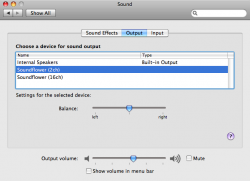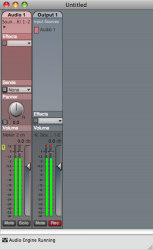Hello,
I'm looking for a system wide dynamic range compression (DRC). I checked soundflower and audio hijack, but none seems able to make DRC on the fly before sending it to the speakers.
Actually, a video player or music player able to do this on its own would be a very good start. A system wide software would be great, because I would be then able to user any video/music player.
Greetings,
I'm looking for a system wide dynamic range compression (DRC). I checked soundflower and audio hijack, but none seems able to make DRC on the fly before sending it to the speakers.
Actually, a video player or music player able to do this on its own would be a very good start. A system wide software would be great, because I would be then able to user any video/music player.
Greetings,



